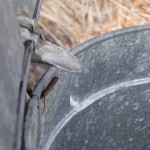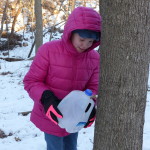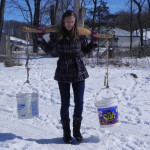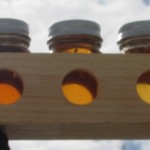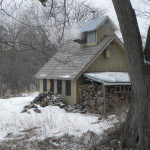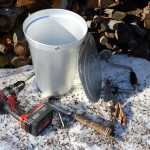Preparing for the season’s first food harvest is a fun way to spend a few hours during winter’s deep freeze. Cornell University Cooperative and New York’s DNR have an excellent PDF “Maple Syrup Production for the Beginner.” Wikipedia features a comprehensive overview of syruping.
Trees of many maple species will flow sweet sap as soon as daytime temperatures rise into the high 30s while nights drop below the freezing point. That can happen in early February down South and six weeks later in Canada.
Syruping is fun, educational and a wonderful activity to share with children. It can be done far beyond the classic syruping regions of New England, Canada and the Lake States. We’ve been in touch with families from North Dakota to North Carolina who make maple syrup. We’ve made gallons in Iowa. All it takes is a tree or two of any maple species, the right weather and simple tools. When done properly, it doesn’t hurt the tree. Silver, sugar, black, and red maples all run sweet sap. So does the box elder, which is a true maple.
You’ll find past blogs on Winding Pathways that show how to make simple syruping equipment. Type maple syruping in the search box at the bottom of the screen or click on this link. Almost everyone already has everything needed to make small quantities of syrup, but it’s easier and a bit more sanitary to use manufactured equipment.
Many companies sell syruping equipment, but most are geared to supply large commercial operations. Tap My Trees is different. They sell easy-to-use equipment to folks wanting to tap a few backyard trees. Their website also includes helpful information on how to tap trees, collect sap, and boil it into syrup. Check it out!
- Clear sap dripping into the bucket.
- A clean milk jug makes a simple “bucket” to collect sap.
- Carrying “modern buckets” on a yoke.
- Maple Syrup’s taste is stronger with a deeper amber.
- A traditional sugar shack
- Modern equipment make backyard syruping easy and pleasurable.

